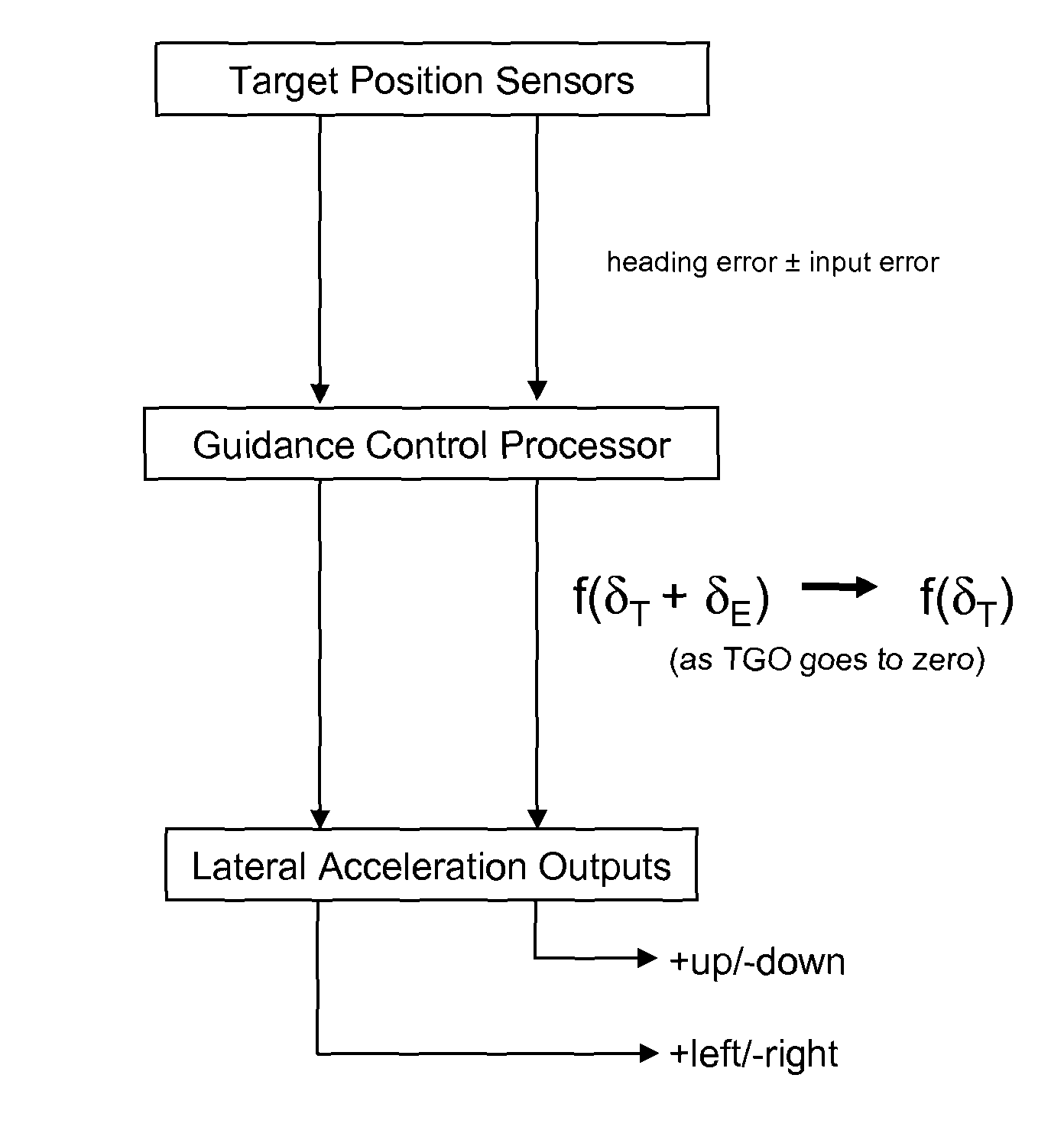Guidance system with varying error correction gain
a technology of error correction gain and guidance system, which is applied in the direction of direction controllers, target-seeking control, instruments, etc., can solve the problems of inaccuracy of expected bearing to the point of intersection, error or tolerance in the accuracy of such knowledge, and inherent error or tolerance in the output of guidance control
- Summary
- Abstract
- Description
- Claims
- Application Information
AI Technical Summary
Benefits of technology
Problems solved by technology
Method used
Image
Examples
Embodiment Construction
[0034]A novel technique for noise tolerant guidance as disclosed herein seeks to evaluate the commands that result from application of an applicable guidance law. The technique is applicable to various specific guidance laws and is discussed in the example of a feedback error control function.
[0035]A basic input to a guidance control system is provided by sensor data signal provided continuously or sampled successively and reported over time to a guidance controller such as a processor, identifying the present position of a target to be intercepted. In one embodiment, the position information is limited to identification of a line of sight to the target. Referring to FIG. 1, a missile or projectile is assumed to be located at the origin of the orthogonal X-Y-Z axes shown (axis Z being perpendicular to the X-Y plane). In different embodiments, the guided item might be a self propelled missile such as a rocket, or the invention could be applied to control of a projectile such as an ar...
PUM
 Login to View More
Login to View More Abstract
Description
Claims
Application Information
 Login to View More
Login to View More - R&D
- Intellectual Property
- Life Sciences
- Materials
- Tech Scout
- Unparalleled Data Quality
- Higher Quality Content
- 60% Fewer Hallucinations
Browse by: Latest US Patents, China's latest patents, Technical Efficacy Thesaurus, Application Domain, Technology Topic, Popular Technical Reports.
© 2025 PatSnap. All rights reserved.Legal|Privacy policy|Modern Slavery Act Transparency Statement|Sitemap|About US| Contact US: help@patsnap.com



